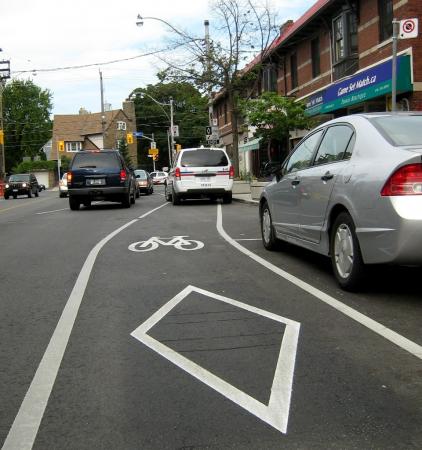[...]
Definitions
Intent is defined in Canadian law by the ruling in
R v Mohan (1994) as "the decision to bring about a prohibited consequence."
A range of words represents shades of
intent in criminal laws around the world. The mental element, or
mens rea, of
murder, for example, is traditionally expressed as
malice aforethought, and the interpretations of
malice, "maliciously" and "wilfully" vary between pure intent and
recklessness or
negligence,[
citation needed] depending on the
jurisdiction in which the crime was committed and the seriousness of the offence. The intent element of a crime, such as intent to kill, may exist without a malicious
motive, or even with a benevolent motive, such as in the case of
euthanasia.
[1]
A person
intends a consequence they
foresee that it will happen if the given series of acts or omissions continue, and
desires it to happen. The most serious level of
culpability, justifying the most serious levels of
punishment, is achieved when both these components are actually present in the accused's mind (a "subjective" test). A person who plans and executes a crime is considered, rightly or wrongly, a more serious danger to the public than one who acts spontaneously (perhaps because they are less likely to get caught), whether out of the sudden opportunity to steal, or out of anger to injure another. But intent can also come from the common law viewpoint as well.
The test of intent
The policy issue for those who administer the criminal justice system is that, when planning their actions, people may be aware of many probable and possible consequences. Obviously, all of these consequences could be prevented through the simple expedient either of ceasing the given activity or of taking action rather than refraining from action. So the decision to continue with the current plan means that all the foreseen consequences are to some extent
intentional, i.e. within and not against the scope of each person's intent. But, is the test of culpability based on purely a subjective measure of what is in a person's mind, or does a court measure the degree of fault by using objective tools?
For example, suppose that A, a jealous wife, discovers that her husband is having a sexual affair with B. Wishing only to drive B away from the neighbourhood, she goes to B's house one night, pours petrol on and sets fire to the front door. B dies in the resulting fire. A is shocked and horrified. It did not occur to her that B might be physically in danger and there was no conscious plan in her mind to injure B when the fire began. But when A's behaviour is analysed, B's death must be intentional. If A had genuinely wished to avoid any possibility of injury to B, she would not have started the fire. Or, if verbally warning B to leave was not an option, she should have waited until B was seen to leave the house before starting the fire. As it was, she waited until night when it was more likely that B would be at home and there would be fewer people around to raise the alarm. Whereas intent would be less if A had set fire to the house during the day after ringing the doorbell to check no one was home and then immediately ringing the fire brigade to report the fire.
On a purely subjective basis, A intended to render B's house uninhabitable, so a reasonably substantial fire was required. The
reasonable person would have foreseen a probability that people would be exposed to the risk of injury. Anyone in the house, neighbours, people passing by, and members of the
fire service would all be in danger. The court therefore assesses the degree of probability that B or any other person might be in the house at that time of the night. The more certain the reasonable person would have been, the more justifiable it is to
impute sufficient desire to convert what would otherwise only have been recklessness into intent to constitute the offence of murder. But if the degree of probability is lower, the court finds only recklessness proved. Some states once had a rule that a death that occurred during commission of a
felony automatically imputed sufficient
mens rea for murder. (See
felony murder). This rule has been mostly abolished, and direct evidence of the required mental components is now required. Thus, the courts of most states use a hybrid test of intent, combining both subjective and objective elements, for each offence changed.
In
English law, s8 Criminal Justice Act 1967 provides a statutory framework within which
mens rea is assessed. It states:
A court or jury, in determining whether a person has committed an offence,
(a) shall not be bound in law to infer that he intended or foresaw a result of his actions by reasons only of its being a natural and probable consequence of those actions; but
(b) shall decide whether he did intend or foresee that result by reference to all the evidence, drawing such inferences from the evidence as appear proper in the circumstances.
Under s8(b) therefore, the jury is allowed a wide latitude in applying a hybrid test to impute intent or foresight (for the purposes of recklessness) on the basis of all the evidence. See
Intention in English law.
[...continues at length...]








